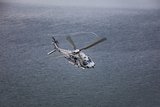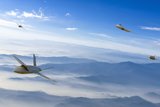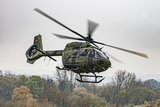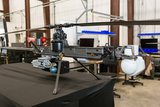Why the USAF's Sentinel ICBM faces multiple challenges
A rendering of the LGM-35A Sentinel missile. (Photo: US DoD)
The US Air Force (USAF) is facing more obstacles over the next few years to its plan to modernise the ground-based leg of the nuclear triad even after the Sentinel intercontinental ballistic missile (ICBM) programme survived the DoD’s Nunn-McCurdy Review.
Planned to replace the Minuteman III ICBM (MMIII), the size and scope of the Sentinel initiative as well as the financial resources it requires may well hamper the USAF’s ability to progress with it.
Speaking in a webinar conducted by US-based think tank Brookings Institution, the Undersecretary of the Air Force, Melissa Dalton claimed that the modernisation of the ICBM capability
Already have an account? Log in
Want to keep reading this article?
More from Air Warfare
-
![German Navy in “ramp-up” phase as it welcomes first NH90 Sea Tiger delivery]()
German Navy in “ramp-up” phase as it welcomes first NH90 Sea Tiger delivery
With all 31 aircraft set to be delivered by 2030, the helicopters will gradually replace the ageing Sea Lynx fleet which are due to be retired in 2026.
-
![The future is here: Sixth-gen air dominance]()
The future is here: Sixth-gen air dominance
How RTX is equipping the military airspace – for today’s fleet and tomorrow’s fight.
-
![Will fresh FCAS talks resolve political turmoil?]()
Will fresh FCAS talks resolve political turmoil?
German, French and Spanish leadership set an end-of-year deadline to decide the fate of the Future Combat Air System programme which has struggled with a political stalemate for the latter half of 2025.
-
![Germany acquires additional 20 H145M helicopters]()
Germany acquires additional 20 H145M helicopters
The order for the extra helicopters comes from an agreement penned in December 2023, with the German Army receiving the bulk of the platforms.
-
![Anduril UK and GKN Aerospace collaborate on British Army ACP bid]()
Anduril UK and GKN Aerospace collaborate on British Army ACP bid
The pair will submit their demonstrator concept for Project Nyx, a development project for the British Army’s Land Autonomous Collaborative Platform.
-
![US Army command’s Picatinny CLIK common lethal drone interface makes progress]()
US Army command’s Picatinny CLIK common lethal drone interface makes progress
The Picatinny Common Lethality Integration Kit is designed to overcome the issue of unique integration methods between lethal payloads and drones as well as avoiding problematic acquisition conditions created by vendor lock.
























